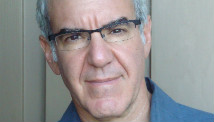Despite having their feet back on solid ground and are making their way home, passengers from the Carnival Triumph cruise ship are still fuming over their five days of squalor on the stricken ship and the cruise ship company is likely to be hit with a wave of lawsuits.
"I think people are going to file suits and rightly so," maritime trial attorney John Hickey told ABCNews.com. "I think, frankly, that the conduct of Carnival has been outrageous from the get-go."
Hickey, a Miami-based attorney, said his firm has already received "quite a few" inquiries from passengers who just got off the ship early this morning.
"What you have here is a) negligence on the part of Carnival and b) you have them, the passengers, being exposed to the risk of actual physical injury," Hickey said.
Click Here for Photos of the Stranded Ship at Sea
The attorney said that whether passengers can recover monetary compensation will depend on maritime law and the 15-pages of legal "gobbledygook," as Hickey described it, that passengers signed before boarding, but "nobody really agrees to."
One of the ticket conditions is that class action lawsuits are not allowed, but Hickey said there is a possibility that could be voided when all the conditions of the situation are taken into account.
One of the passengers already thinking about legal action is Tammy Hilley, a mother of two, who was on a girl's getaway with her two friends when a fire in the ship's engine room disabled the vessel's propulsion system and knocked out most of its power.
"I think that's a direction that our families will talk about, consider and see what's right for us," Hilley told "Good Morning America" when asked if she would be seeking legal action.
While she said that she does not want to be greedy or exploit the situation, she does not feel that Carnival's $500 compensation is enough for the trauma passengers suffered.
Carnival's Triumph Passengers: 'We Were Homeless' Watch Video
Girl Disembarks Cruise Ship, Kisses the Ground Watch Video
Carnival Cruise Ship Passengers Line Up for Food Watch Video
"You talk about the emotional trauma and just last night, feeling what we went through last night while we were on land with our families and our insides just trembling," she said. "I don't think it begins to even say what is needed here."
In addition to the money, passengers will receive a full refund for the cruise, transportation expenses and vouchers for another cruise.
"We made our own nest [on deck] because we were just too terrified to go inside because of the smells and the germs, so we just banded together and made our own little nest and just survived," Hilley's friend Ann Barlow said.
Her friend Carolyn Klam said she got a stomach virus from drinking bad water once the power went out and friend Tammy Hilley said her cell phone was stolen this morning as the boat came into port.
"I think going back to our room was kind of traumatic and seeing that from day one we had no home, we were homeless," Hilley said. "We would go downstairs below deck and your feet could feel the sludge that you were walking through. The smells and the liquids draining from the ceiling and the stories of people sleeping in the hallways and the sanitary bags in the hallway, that was traumatic to just watch it start piling up."
The more than 4,000 passengers and crew began to disembark from the damaged ship around 10:15 p.m. CT Thursday in Mobile, Ala., amid cheers and tears. The last passenger left the ship at 1 a.m. CT, according to Carnival's Twitter handle.
Passenger Brandi Dorsett was thankful to be home, especially for her mother who was with her on the ship. Dorsett said she wasn't pleased with the doctor on staff.
"My mother is a diabetic, and they would not even come to the room because she cannot walk the stairs to help her with insulin. She hasn't had insulin in three days," Dorsett said.
The Carnival Triumph departed Galveston, Texas, last Thursday and lost power Sunday.
Cruise Ship Newlyweds Won't Be Spending Honeymoon on a Boat
After power went out, passengers texted ABC News that sewage was seeping down the walls from burst plumbing pipes, carpets were wet with urine, and food was in short supply. Reports surfaced of elderly passengers running out of critical heart medicine and others on board squabbling over scarce food.
"It's degrading. Demoralizing, and then they want to insult us by giving us $500," Veronica Arriaga said after disembarking the ship.
As the ship docked, passengers lined the decks of the Triumph, waving and whistling to those on shore. "Happy V-Day" read a homemade sign made for the Valentine's Day arrival, while another sent a starker message: "The ship's afloat, so is the sewage."
WATCH: Carnival CEO Gerry Cahill Apologizes to Passengers













